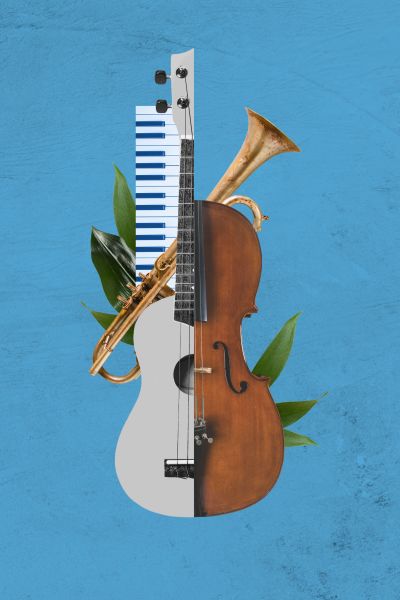A mid-week rapid workout for your grey cells. How many of these questions you can answer correctly?
Quiz Whizz: November 28, 2023
Up your GK quotient with this quick quiz. How many questions can you answer?
Up your GK quotient with this quick quiz. How many questions can you answer?
A mid-week rapid workout for your grey cells. How many of these questions you can answer correctly?
A fun game that is all things music. How many words can you find?
Music has always been many things — entertainment, career, fun, passion… the list is endless. But, since time immemorial, it has been a great leveler. It does not differentiate between the rich, poor, race, or religion. In fact, it has broken all barriers and managed to put people at ease, regardless of the language or culture. Irrespective of whether it is through instrument or song, it can calm and excite, soothe, and enthuse, all at once.

Think of music, and melody isn’t far behind. Irrespective of the mood, who doesn’t enjoy melodious music? Here’s a fun game called Word Flower to try. From the given letters, find as many words as possible that are four or more letters long. The central letter must be included in each word. Enter letters by clicking on them, or by typing them in. You can use each of the given letters only once. The word is MELODIOUS.
Shapes, lines, points… this crossword is all about Geometry.
This math crossword can be a fun and engaging way to recall a few geometrical concepts you have learnt in school.
Delve into the science of earthquakes and the story behind seismic shifts.

Fierce. Fearless. Formidable. Learn more about this beautiful animal that is facing many threats to its existence.

Long or short, every sentence has to follow the basic rules of grammar. What is that? Every sentence must have a subject and a predicate.
When we write a sentence, we place words in a certain order. That is known as the structure of the sentence. it can be subject, predicate, objects, phrases, punctuation and so on.
Every sentence requires at least a verb and a subject; a verb is an action, and a subject is the noun that does the action.
Following the basic rules of grammar, can you complete these sentences?
Here are six poses for you. Arrange them just as you would in a Sudoku grid.
Picdoku is a type of sudoku where the grid contains images or emojis. Dive into this mindbending challenge and arrange the icons to get them in a pattern.
This puzzle is all about Yoga. Can you place the poses in the grid in such a way that each pose appears only once in every row, column and 3*2 box?
Today, we use fireworks to celebrate festivals, weddings and more. But did you ever think of how these explosives came to be?
Have you seen how bamboo clumps on fire splutter, split and explode? Well, you have seen the earliest forms of fireworks or crackers, as they are known in India. Baozhu in Chinese — which literally meant ‘exploding bamboo’ — was the predecessor of fireworks. According to Chinese legend, on New Year’s Eve, a monster would come to eat villagers and destroy villages. People burnt bamboo to produce an explosive sound to scare it away. Thus, fireworks became a tradition for New Year. Read on to know more about how firecrackers have evolved over the centuries.
Click on ‘turn’ to read more about each card. Click on the arrow to move to the next card.
Breadventure begins! Explore the world of baking and learn how to make your own bread.
Hey, aspiring bakers! Making bread is like creating magic in your kitchen. Mix flour, water, yeast, and a pinch of fun together. Knead it, like you’re giving it a squishy hug, then watch it rise like a fluffy cloud! Pop it in the oven, and soon, your home will smell like a cozy bakery. When it’s done, slice it, add your favorite toppings, and share the happiness you baked!
Scroll through these slides for instructions.
Freepik
In the mood for a quick tour? Try this Geography-based crossword and see how many of these places you know.
Time for an activity based on your knowledge of Geography. The clues for this crossword are based on places across the world. Can you find the answers to them all?